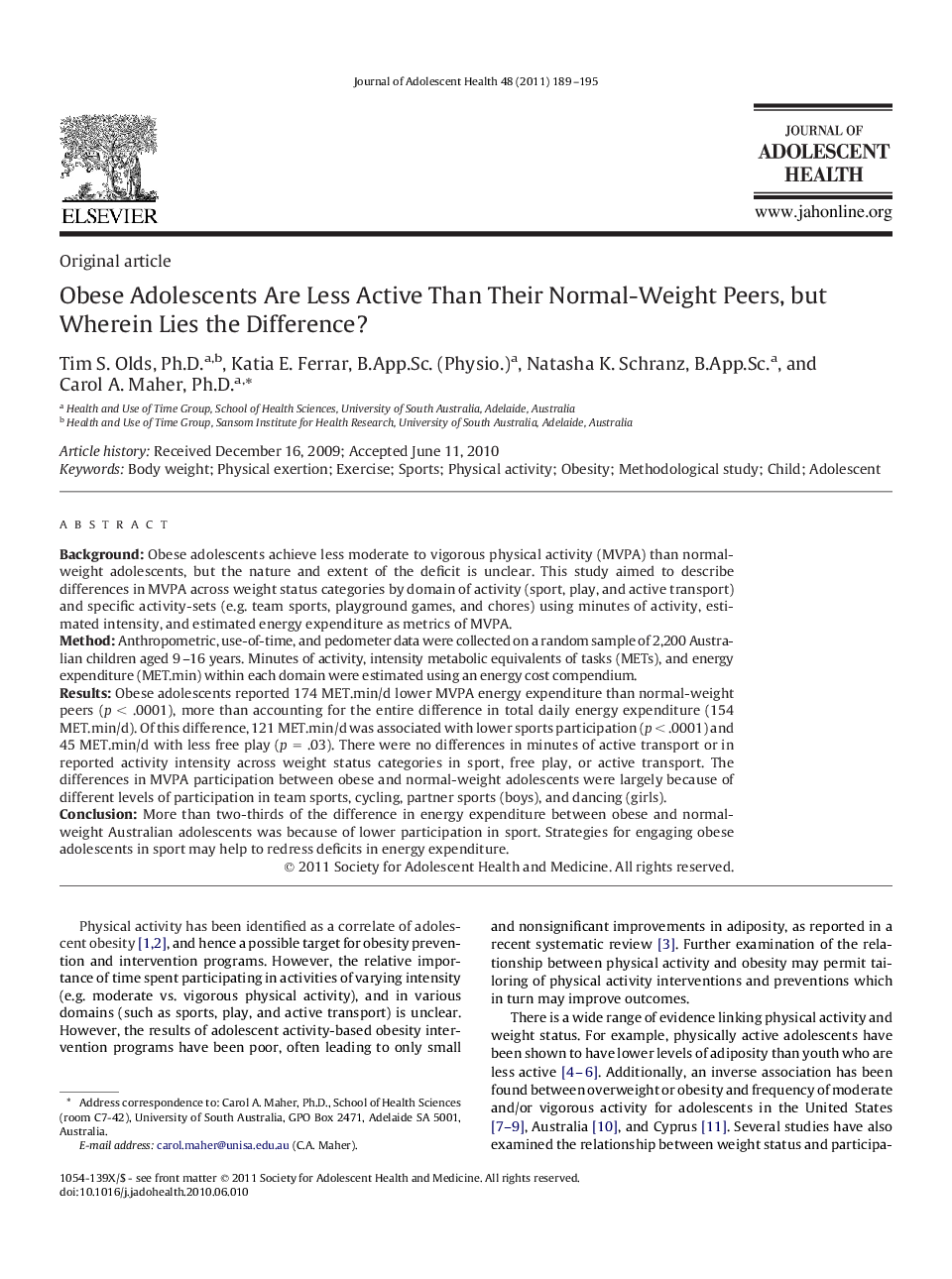| Article ID | Journal | Published Year | Pages | File Type |
|---|---|---|---|---|
| 1080262 | Journal of Adolescent Health | 2011 | 7 Pages |
BackgroundObese adolescents achieve less moderate to vigorous physical activity (MVPA) than normal-weight adolescents, but the nature and extent of the deficit is unclear. This study aimed to describe differences in MVPA across weight status categories by domain of activity (sport, play, and active transport) and specific activity-sets (e.g. team sports, playground games, and chores) using minutes of activity, estimated intensity, and estimated energy expenditure as metrics of MVPA.MethodAnthropometric, use-of-time, and pedometer data were collected on a random sample of 2,200 Australian children aged 9–16 years. Minutes of activity, intensity metabolic equivalents of tasks (METs), and energy expenditure (MET.min) within each domain were estimated using an energy cost compendium.ResultsObese adolescents reported 174 MET.min/d lower MVPA energy expenditure than normal-weight peers (p < .0001), more than accounting for the entire difference in total daily energy expenditure (154 MET.min/d). Of this difference, 121 MET.min/d was associated with lower sports participation (p < .0001) and 45 MET.min/d with less free play (p = .03). There were no differences in minutes of active transport or in reported activity intensity across weight status categories in sport, free play, or active transport. The differences in MVPA participation between obese and normal-weight adolescents were largely because of different levels of participation in team sports, cycling, partner sports (boys), and dancing (girls).ConclusionMore than two-thirds of the difference in energy expenditure between obese and normal-weight Australian adolescents was because of lower participation in sport. Strategies for engaging obese adolescents in sport may help to redress deficits in energy expenditure.
